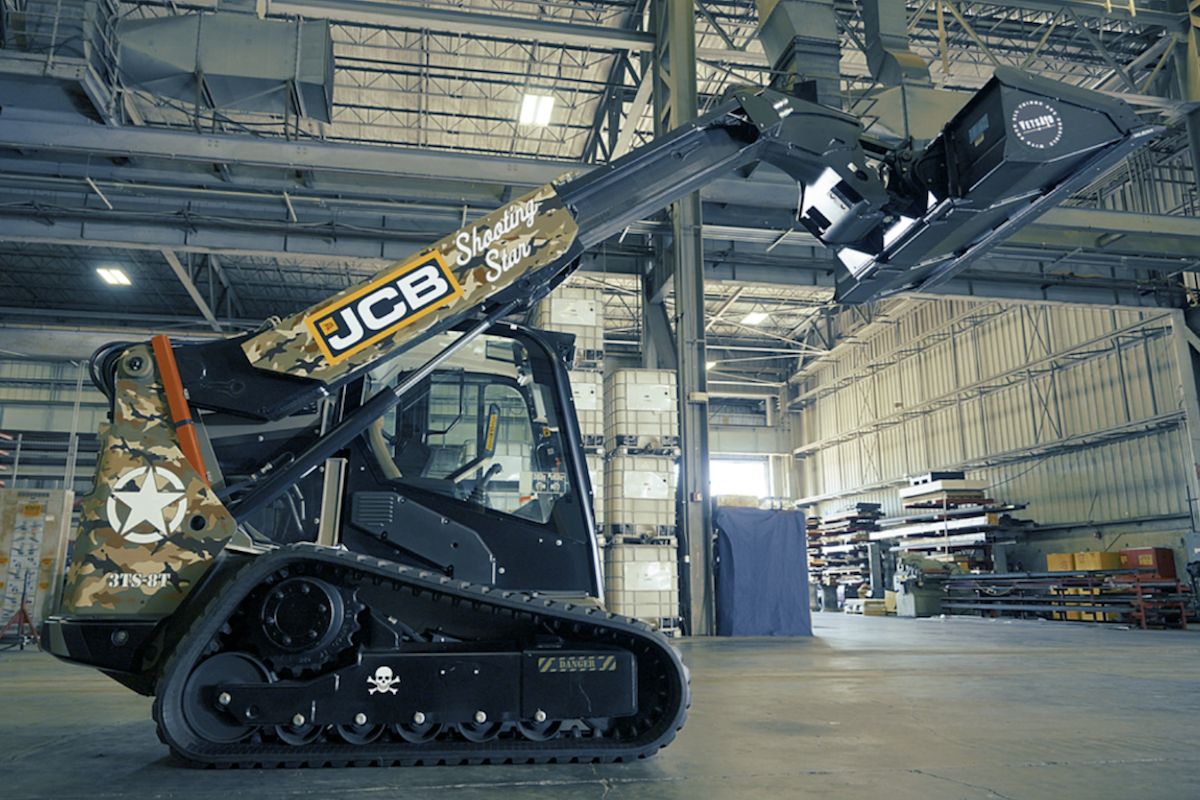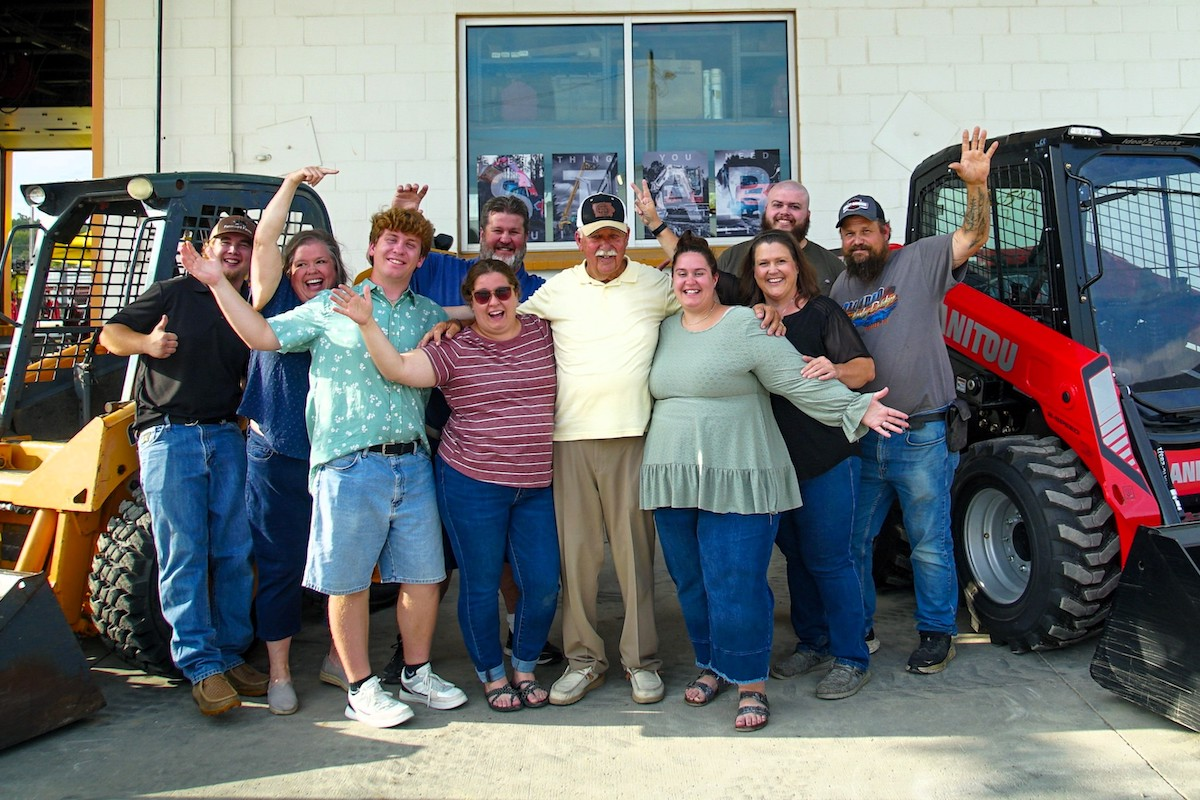Click
Click-type torque wrenches are the most common. They have the same functionality as a ratchet with the added advantage of a distinct breaking action when it reaches the desired torque value.
Available torque values are displayed on a dual scale (metric, expressed in Newton-meters, and imperial, expressed in foot-pound or inch-pound) on the barrel of the tool. Torque wrench capacity is indicated by the minimum and maximum value on the scale. The operator sets the desired torque value by unlocking the wrench and twisting the handle, which moves a precision indicator along the scale.
Just like a ratchet, the head of click-type torque wrenches houses the gear and paw mechanism. The repetitive force applied to its mechanism leads to the need for regular maintenance and recalibration.

| Your local Gomaco dealer |
|---|
| Fabick CAT/MO |
| Road Machinery and Supplies Company |
Dial
Dial-type torque wrenches are considered the most accurate torque wrenches available. These wrenches feature a double-end square drive that can tighten and loosen fasteners. The torque value is displayed on an easy-to-read, analog, dual-scale dial (hence their name). Inside the dial, there are two memory needles. The first needle is set to the desired torque setting while the second needle is set to zero. As torque force is applied, the second needle moves along the dial. When the two needles meet, the desired torque has been achieved.
Due to their simpler torque mechanism, dial-type torque wrenches don’t require as much maintenance and recalibration as click-type torque wrenches. Most models feature an audio-visual alert that signals the operator when the target torque is reached.
Dial-type torque wrenches are widely used in quality control applications to ensure the actual torque applied in the production process complies with the stated specifications.
Electronic
Electronic torque wrenches use an electronic sensor to measure torque and display the torque value on a digital display. An audible and visual indicator informs the user that they are approaching the desired torque value and when the exact value has been reached.
They’re very accurate instruments. However, their delicate construction requires extra care, and they need batteries to operate.
These torque wrenches are one of the most expensive styles available. However, they can be considered four torque wrenches in one, due to their ability to set torque values in four scales: foot-pounds, inch-pounds, Newton-meters, and kilogram-centimeter.
Electronic torque wrenches are ideal in automotive and transportation settings, as they can be linked to hardware such as laptops, tablets, and printers. In many heavy-truck repair environments, it is mandatory that printed proof of wheel torque adjustments be available as part of certified repair service.
Beam
Finally, beam torque wrenches are the most simplistic torque wrenches available. However, they are difficult to read and the least accurate. As a result, they have virtually been eliminated from use in professional working environments.
- Do you need to tighten fasteners to multiple or single torque values?
- What is the lowest and highest torque value you will be setting fasteners?
- What drive size are the sockets you will most commonly use (¼-inch, ⅜-inch, ½-inch, ¾-inch, or 1-inch)?
- Do you need the torque wrench to operate both clockwise and counterclockwise?
- What level of precision do you require?
Torque wrenches operate best within 40 to 80 percent of their working scale. Therefore, do not choose a wrench that will be primarily used at the bottom or top end of its scale.
Torque wrenches should be recalibrated at least once a year or every 5,000 cycles. As expected, more frequent use requires more frequent calibration.
- Never use a torque wrench with a missing or expired certificate of calibration.
- If you buy a used torque wrench, properly calibrate it before the first use, and never set your wrench at values higher or lower than those indicated on the scale.
- Keep up regular preventive maintenance required by the manufacturer.
- When not in use, clean and keep the torque wrench in its storage case at its lowest torque setting.
- Be careful not to drop the torque wrench, as this will cause a loss of calibration.
- Repair and recalibration should only be done by an accredited laboratory.
- Never exceed the rated torque of the tool, as over-torquing will result in wrench or part failure.
- Never use a torque wrench to break fasteners loose. The same advice applies whether you’re using a cheater bar or other type of extension. If extra torque is required, use a larger torque wrench or a torque multiplier.
At the end of the day, just remember that if you take care of your torque wrench, it’ll take care of you. From the fasteners that hold your equipment together to the jobs that keep your business together, get peace of mind knowing that the right torque wrench will keep it secured.
Paul Dean is the Vice President of Operations at Gray Tools. He has over 30 years of manufacturing and operations experience, helping thousands of professionals build and maintain their Gray and Dynamic tool collections for years of reliable use.







































































